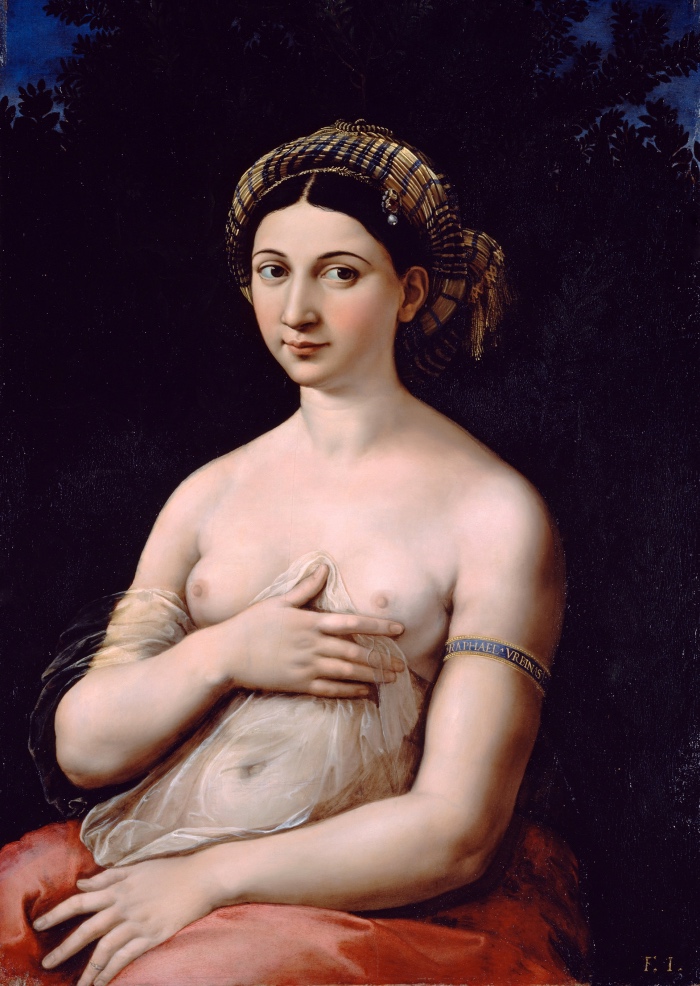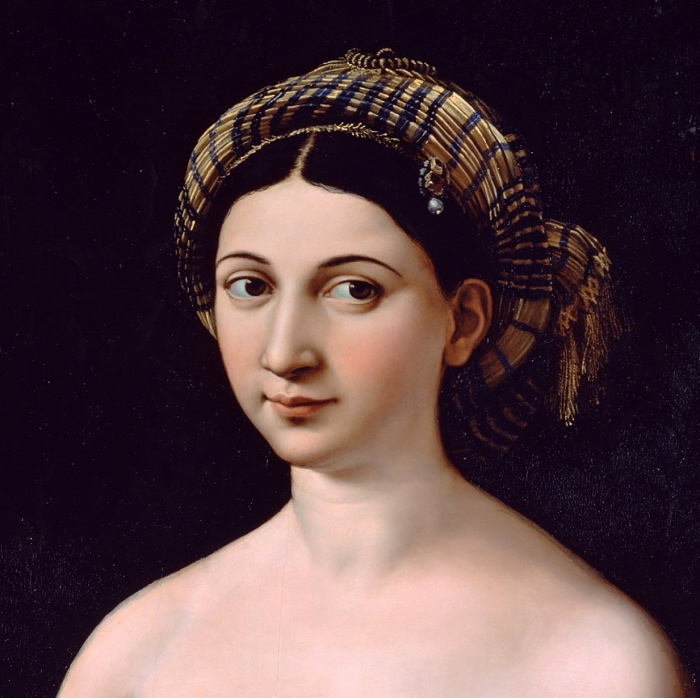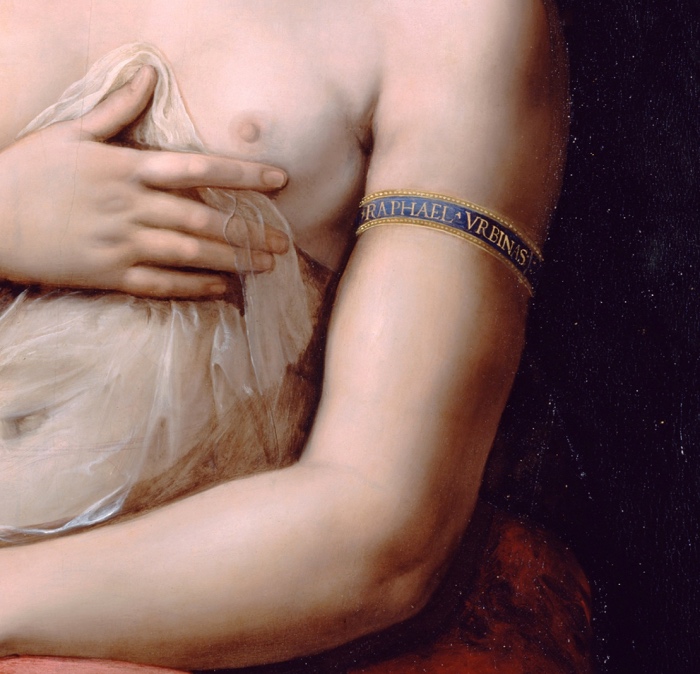
LA FORNARINA BY RAPHAEL: WHO SHE WAS AND WHERE TO ADMIRE THE PAINTING
Which story does la Fornarina by Raphael tell and who is the young woman made immortal by this painting?
Stories of any kind have circulated about this painting and for this reason this work has become legendary.
We don’t know almost anything about the true identity of La Fornarina, but theories are many and, as always happen in these cases, people can build a story as they wish.
In this post I’ll tell you who the girl painted by Raphael was, according to the main theories, and where you can admire the painting today.
La Fornarina by Raphael

WHO LA FORNARINA BY RAPHAEL WAS
She was maybe the daughter of a baker of Trastevere or a courtesan, that is to say a high-class prostitute.
The true identity of this young woman is unknown, but we know for sure that Raphael loved her very much and she was his muse.
Raphael was one the great masters of the 16th century and looking at his paintings we often see the face of La Fornarina, who became the artist’s model.
Giorgio Vasari tells in his writings that Raphael was about to stop painting the fresco of the Loggia of Galatea in the Villa Farnesina if they hadn’t brought the young woman, who was the model for that work.
Some scholars have identified La Fornarina by Raphael with Margherita Luti, daughter of a Roman baker of Trastevere.
They fell deeply in love and it seems that the artist lost his head for this young woman of humble origins.
History and legend blend, and it is said that they got married in secret, and when Raphael died the girl wanted to remain faithful to their love and retired to the convent of Sant’Apollonia.
Raphael’s love for the humble baker’s daughter is romantic, and also for this reason some scholars affirm that it isn’t a plausible story, and La Fornarina was actually a courtesan, who chose that nickname of the painting with whom she became famous.
DESCRIPTION OF LA FORNARINA BY RAPHAEL
La Fornarina by Raphael is portrayed with bare breast, wearing a light veil on her womb, a fabric covering her legs and a bracelet on the left arm carrying the golden signature of the artist: RAPHAEL URBINAS.
This bracelet would be typical of Renaissance courtesans, who had bare shoulders and so they could flaunt this jewellery, while women wearing long sleeve dresses couldn’t show.
Her hair is tied in an oriental turban decorated with jewellery with a pearl.
WHERE TO ADMIRE LA FORNARINA BY RAPHAEL
La Fornarina by Raphael is housed in Rome, in the collection of the National Gallery of Ancient Art in Palazzo Barberini.
Actually, the work has never left Rome and has been in the Eternal City since it has been painted.
In fact, it was in the artist’s studio at his death, while at the end of the 16th century was already in the collection of the Countess of Santafiora.
Later the painting become property of the Duke Boncompagni and then of the Palazzo Barberini.

- Raphael: The Drawings – The Ashmolean Museum and the Albertina are collaborating on a two-part exhibition project that will examine anew the role and the significance of drawing in Raphael’s career.
-
Raphael’s Madonnas: Images for the Soul – This beautiful collection of 43 colour images of the Madonna by Raphael can be used for meditation, prayer or simply for appreciation.


In Trastevere, Rome they still show the window where Raphael saw La Fornarina the first time…
“Tell me ye stones and give me O glorious palaces answer.
Speak O ye streets but one word. Genius, art thou alive?
Yes, here within thy sanctified walls there’s a soul in each object,
ROMA eternal. For me, only, are all things yet mute.
Who will then tell me in whispers and where must I find just the window
Where one day she’ll be glimpsed: creature who’ll scorch me with love?
Can’t I divine yet the paths through which over and over
To her and from her I’ll go, squandering valuable time?
Visiting churches and palaces, all of the ruins and the pillars,
I, a responsible man, profit from making this trip.
With my business accomplished, ah, then shall only one temple,
AMOR’s temple alone, take the initiate in.
Rome, thou art a whole world, it is true, and yet without love this
World would not be the world, Rome would cease to be Rome…”